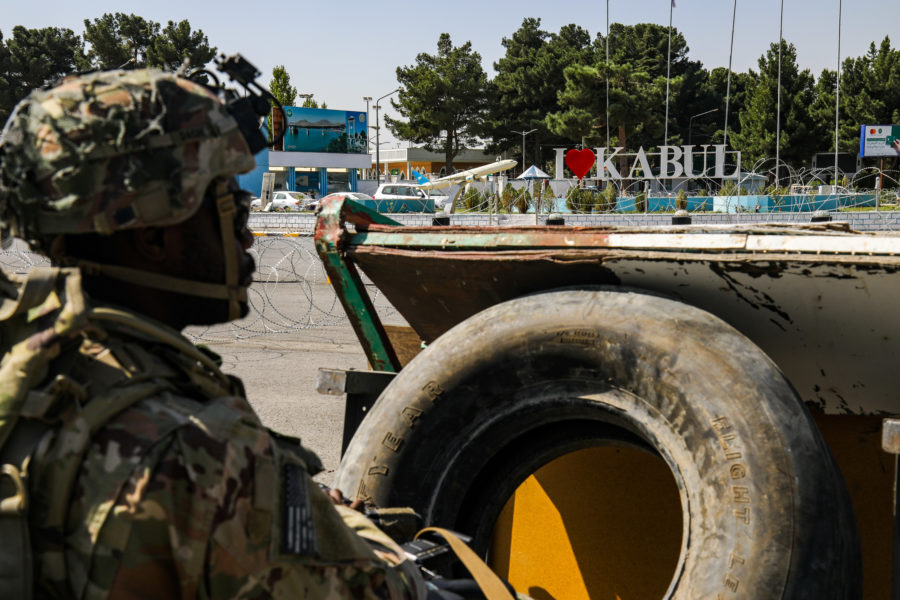On April 6, the White House issued its account of the decisions that preceded the chaotic U.S. withdrawal from Afghanistan, as Congress is moving to investigate President Joe Biden and his administration’s decision-making during the crisis.
The 12-page summary largely blames former President Donald Trump’s administration for putting the U.S. in a weakened position with the Taliban. It also faults the Afghan government and its security forces for allowing the country to rapidly fall into the hands of the enemy in August 2021.
The summary, however, does not discuss the recommendations from top military commanders that the U.S. retain 2,500 troops in the country while trying to negotiate a better agreement. Nor does it note the assessment by the Pentagon’s Special Inspector General for Afghanistan Reconstruction (SIGAR) that the withdrawal of Western contractors hobbled the Afghan air force as it struggled to hold the line against Taliban fighters.
Separately, the Department of Defense sent its long-awaited classified Afghanistan After Action Review to Congress.
The classified after action review has long been completed but had not previously been shared outside the executive branch. National Security Council Strategic Communications Coordinator John Kirby told reporters neither the Pentagon document nor another classified review by the State Department that was also sent to the Congress would be made public.
The 21-year-old Afghan conflict is still the subject of a politically charged debate. A year and a half after the U.S. withdrawal, the Taliban remains in power, women and girls have been barred from schools, and the country is mired in poverty.
The White House summary argues the U.S. accomplished its main objective of defeating al-Qaida and the difficulties in Afghanistan accrued over multiple administrations.
“The president’s decision to end the war in Afghanistan was the right one,” Kirby said. “The United States had long ago accomplished its mission to remove from the battlefield the terrorists who attacked us on 9/11.”
Republicans, however, accused the Biden administration of mishandling the withdrawal and withholding information.
“President Biden made the decision to withdraw and even picked the exact date; he is responsible for the massive failures in planning and execution,” House Foreign Affairs Committee Chairman Michael McCaul (R.-Texas) said in a statement. “It is also unfortunate it took my subpoena threat to prompt the administration to finally provide the classified after-action reports from the Afghanistan withdrawal.”
The White House document was written by Biden’s National Security Council. Kirby said Biden provided his personal input. As vice president, Biden was skeptical of the military’s push to send reinforcements to Afghanistan. But the crux of the White House’s case is that the new administration inherited a difficult situation.
“President Biden’s choices for how to execute a withdrawal from Afghanistan were severely constrained by conditions created by his predecessor,” the White House document states.
The U.S. only had 2,500 troops in the country when Biden took office. The White House also notes the Trump administration had reached an agreement with the Taliban that pledged U.S. troops would leave the country by May 2021—an agreement made without consulting the Afghan government.
Subsequently, when Biden took office “the Taliban were in the strongest military position that they had been in since 2001, controlling or contesting nearly half of the country,” the White House document states.
The White House also argues the Afghan government was to blame for its defeat. “President Biden urged the Afghan government to take steps to harden the resolve of the Afghan forces,” the document states.
But U.S. military experts warned before the withdrawal that a rapid and total withdrawal of U.S. military and contractor support would undermine the Afghan military’s morale and its ability to use airpower against its foe.
“If we don’t provide them some support they certainly will collapse and that is not in our best interest,” Gen. Frank McKenzie, then-head of U.S. Central Command, told the Senate Armed Services Committee in April 2021, four months before the withdrawal. “So I am concerned about the ability of the Afghan military to hold on after we leave, the ability of the Afghan Air Force to fly in particular after we remove the support for those aircraft.”
A scathing report from the SIGAR released last month cited the lack of contract maintenance support for the Afghan Air Force as a key blow that led to the Taliban gaining more control as the U.S. committed to heading for the exits.
While the White House did not find fault with its own decision-making, it noted the intelligence community failed to accurately forecast how events would unfold.
“As late as May 2021, the assessment was still that Kabul would probably not come under serious pressure until late 2021 after U.S. troops departed,” the document says.
“Clearly we didn’t get it right,” Kirby said. But “the purpose of it is not accountability,” he added, but “understanding.”
